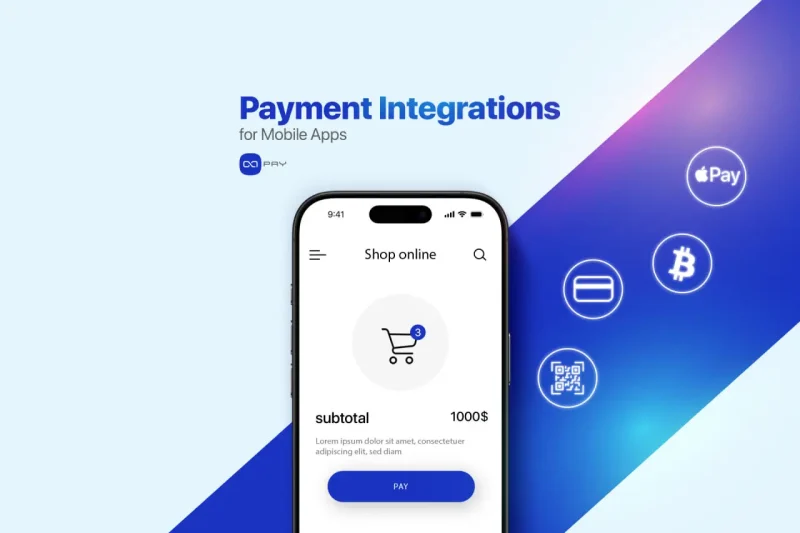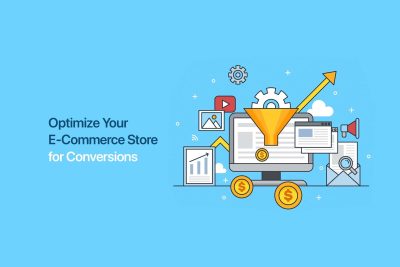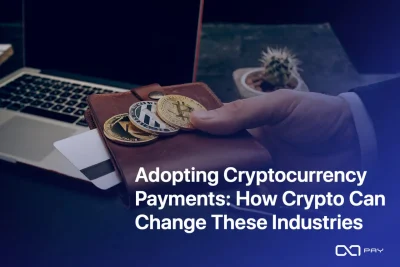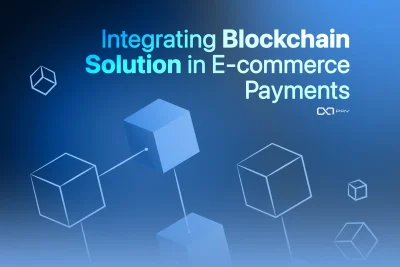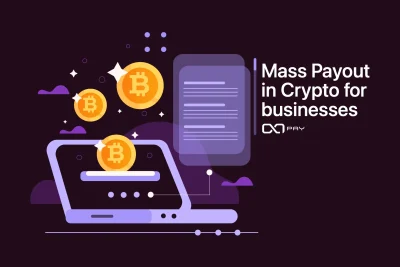В 2024 году было обработано более 1 трлн TP5T6 мобильных платежей, однако миллионы транзакций всё ещё не удалось выполнить из-за плохой интеграции или ограниченных возможностей. Для разработчиков и владельцев продуктов платёж — это не просто деталь бэкенда, а ключевая часть пользовательского опыта. Вот как сделать всё правильно и почему криптовалюта через OxaPay становится мощной альтернативой.
Распространенные модели оплаты в мобильных приложениях
Прежде чем выбрать подход к интеграции платежей для мобильных приложений, важно понять распространенные модели, используемые разработчиками и компаниями:
- Единовременные выплаты: Используется для покупки продукта, загрузки премиум-функции или разблокировки контента.
- Покупки в приложении (ИПП): Управляется Apple или Google для цифровых товаров (например, игровых предметов, монет и т. д.).
- Подписки: Регулярные платежи за постоянный доступ к контенту или функциям.
- Пожертвования: Распространено в некоммерческих или ориентированных на создателей приложениях.
- Внешняя проверка: Перенаправляет пользователей на внешний сайт или страницу оплаты.
У каждой модели свои требования к интеграции. Например, Apple применяет строгие правила к цифровым товарам, продаваемым в приложениях iOS, требуя использования встроенной в приложение платёжной системы. Однако для физических товаров можно использовать внешние шлюзы.
Проверенные отраслевые идеи и данные
Чтобы обосновать решения по интеграции мобильных платежей, давайте рассмотрим некоторые проверенные отраслевые исследования:
- Статиста (2024) сообщает, что глобальный объем мобильных платежных транзакций превысил $6,3 триллиона, показывая, насколько важной стала бесшовная интеграция.
👉 Источник: Statista – Мобильные платежи по всему миру - Исследования можжевельника По оценкам, к 2026 году 54% всех транзакций электронной коммерции будет осуществляться через мобильные кошельки.
👉 Источник: Juniper Research – Рост популярности цифровых кошельков - Институт Беймарда (2023) обнаружили, что средний мировой показатель отказа от онлайн-корзин составляет около 70%, подчеркивая, как фактор платежа напрямую влияет на конверсию.
👉 Источник: Baymard – Статистика по показателю отказа от покупок - Mastercard (опрос 2023 г.) показали, что более 40% потребителей, особенно представители поколения Z, заинтересованы в использовании криптовалюты или стейблкоинов для платежей в приложениях.
👉 Источник: Mastercard – Потребительский интерес к криптовалюте
Эти цифры доказывают, что оптимизация как традиционных, так и криптовалютных платежей напрямую влияет на удержание клиентов и доход.
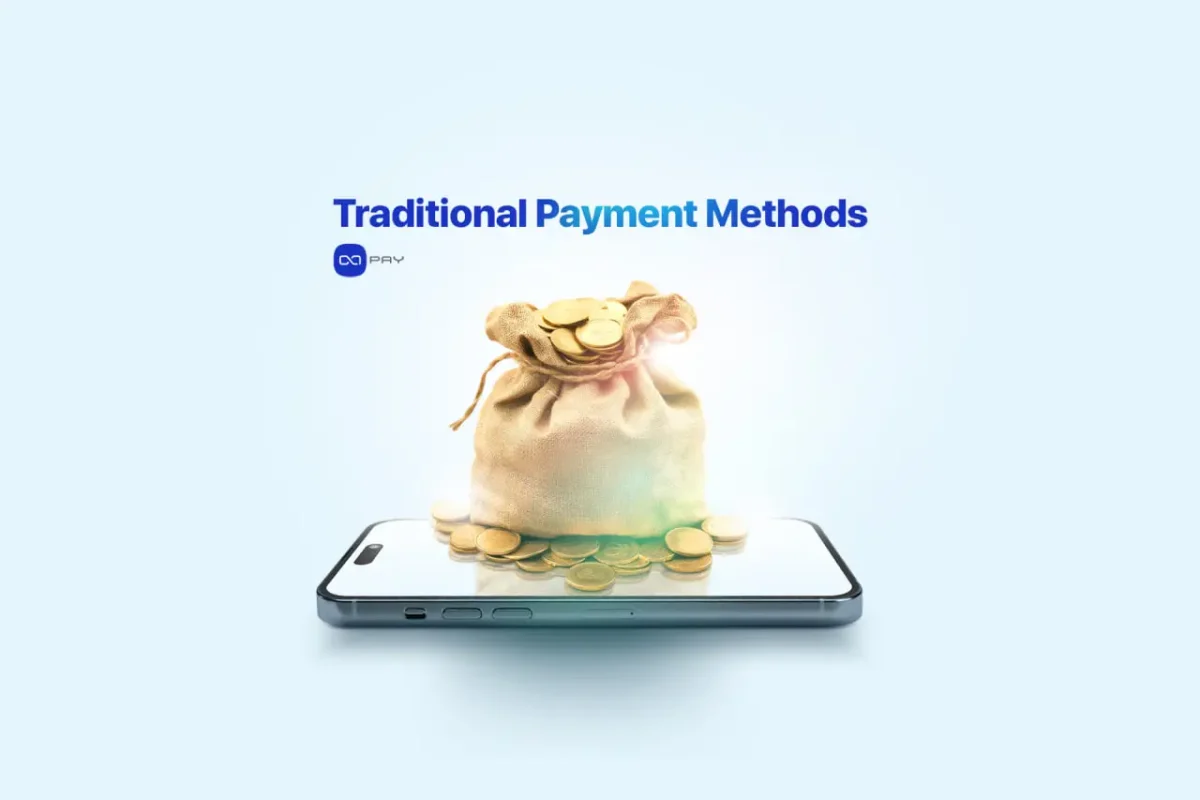
Традиционные способы оплаты
Большинство приложений начинают свой путь к интеграции мобильных платежей с традиционными системами. Вот наиболее распространённые из них:
- Кредитные и дебетовые карты: Через такие шлюзы, как Полоска, Брейнтри, или Адьен. Они позволяют вводить данные карты непосредственно в приложение (если оно соответствует PCI-DSS).
- Цифровые кошельки: Apple Pay, Google Pay, и Samsung Pay обеспечить быструю и безопасную оплату покупок с использованием сохраненных учетных данных.
- Банковские переводы или QR-коды: Используется чаще в определенных регионах (например, UPI в Индии или PayNow в Сингапуре).
Для каждого метода предусмотрены SDK (комплекты средств разработки ПО) или API для упрощения интеграции. Например, Stripe предоставляет мобильные SDK для iOS и Android с простыми примерами кода для инициации и проверки платежей.
Ключевые этапы интеграции мобильных платежей
Процесс может немного отличаться в зависимости от платформы, но общие шаги таковы:
Шаг 1: Выберите шлюз
Выберите одного или нескольких поставщиков на основе:
- Поддерживаемые страны
- Поддерживаемые валюты
- Комиссии и скорость выплат
- Простота интеграции
Шаг 2: Создайте учетную запись продавца
Зарегистрируйтесь на платформе и подтвердите свою личность. Большинство поставщиков услуг требуют предоставить реквизиты компании, банковские реквизиты и подтверждающие документы.
Шаг 3: Добавьте SDK или API
Установите мобильный SDK или подключитесь к API через свой внутренний сервер. В зависимости от ваших потребностей вы можете:
- Позвольте шлюзу управлять пользовательским интерфейсом (вставляемыми элементами)
- Создайте собственный интерфейс и используйте внутренние токены для обеспечения безопасности
Шаг 4: Обеспечение безопасности
Защитите свой платежный процесс с помощью:
- HTTPS для всего трафика
- Токенизация для избежания хранения данных карты
- Внутренняя аутентификация для проверки платежей
Шаг 5: Тестирование и запуск
Используйте «песочницы» для имитации платежей, а затем переходите к использованию живых ключей, как только ваша система будет готова.
Проблемы традиционных систем
Несмотря на свою надёжность, традиционные шлюзы по-прежнему создают препятствия для эффективной интеграции мобильных платежей. К распространённым проблемам относятся:
- Высокие сборы (особенно для трансграничных транзакций)
- Ограниченный доступ в некоторых странах или регионах, не охваченных банковским обслуживанием
- Задержки в расчетах
- Строгие требования соответствия
Эти проблемы подталкивают некоторые приложения, особенно глобальные или финтех-платформы, к поиску альтернативных решений, таких как криптоплатежи.
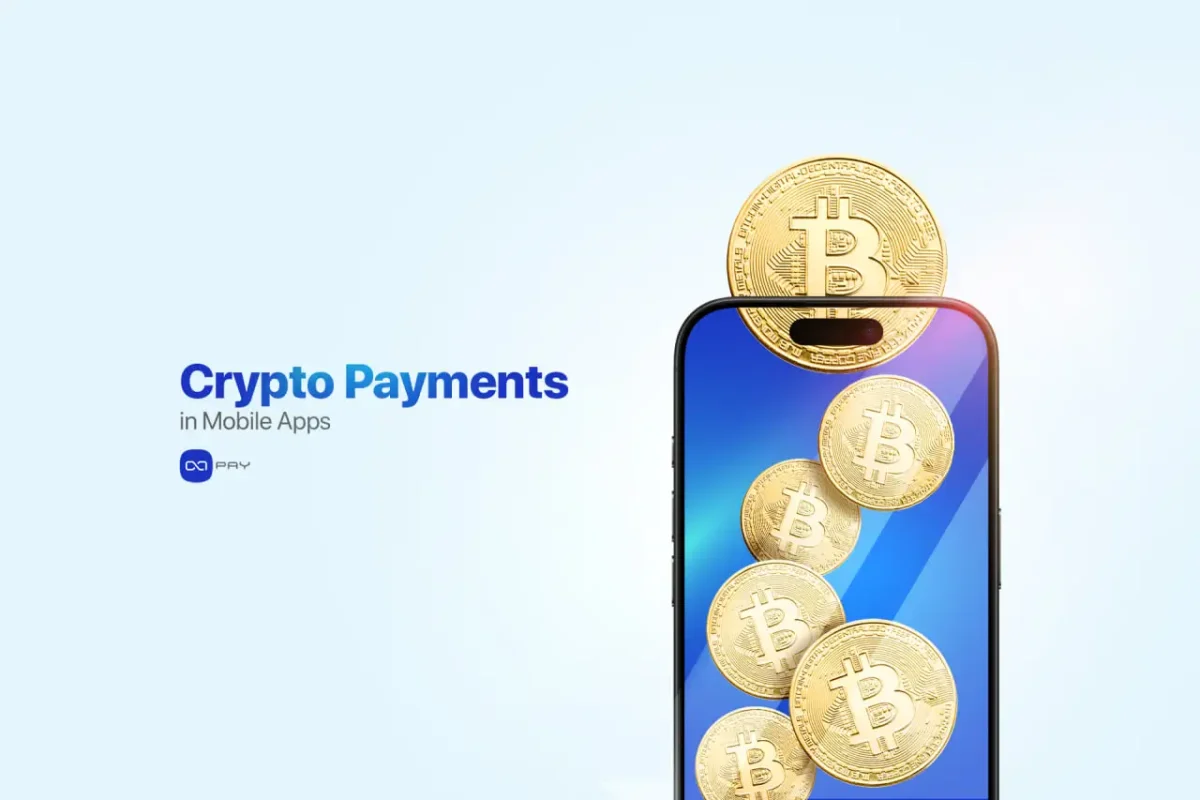
Криптоплатежи в мобильных приложениях: новые возможности
Криптовалюты предлагают быструю, безграничную и недорогую альтернативу. Для мобильных приложений, ориентированных на пользователей по всему миру, криптовалютные платежи могут:
- Устранить банковских посредников
- Сокращение транзакционных издержек
- Разрешить пользователям платить стейблкоинами, снизив волатильность
- Работает мгновенно, идеально подходит для цифровых услуг и подписок
Варианты использования в приложениях:
- Глобальные SaaS-платформы, предлагающие премиум-планы
- Приложения для фриланса или гига, в которых платят работникам
- Цифровые торговые площадки с одноранговыми платежами
- Игровые или NFT-платформы с внутрисетевыми вознаграждениями
Однако интеграция криптовалюты в приложение не так проста, как добавление адреса кошелька. Успешная интеграция мобильных платежей требует корректного выставления счетов, отслеживания в режиме реального времени, обработки ошибок и удобных интерфейсов. Именно для этого нужны такие инструменты, как OxaPay Войдите.
Интеграция криптоплатежей с помощью OxaPay
Криптовалютный шлюз OxaPay это криптоплатежный шлюз без KYC Это позволяет мобильным приложениям безопасно и надёжно принимать криптовалюты. Это идеально подходит для приложений, ориентированных на глобальную аудиторию и не желающих иметь дело с банковским регулированием.
Вот как OxaPay упрощает интеграцию криптовалют:
✅ Что предлагает OxaPay:
- KYC не требуется: Для отправки или получения платежей не требуется верификация пользователя.
- Поддержка широкого спектра монет: BTC, ETH, USDT (TRC-20, ERC-20, BEP20), SOL, DOGE, MATIC и другие
- Быстрые транзакции: Практически мгновенное подтверждение без комиссии за блокчейн для внутренних свопов или конвертаций
- Простая интеграция: REST API для бэкэнда или ссылка для оплаты на основе перенаправления, которая работает в WebView или браузере
- Расширенные функции: Недоплаченное покрытие, URL-адреса обратного вызова и гибкие правила выставления счетов
Полные технические подробности смотрите на сайте Документация API OxaPay.
Чем OxaPay отличается от других решений
Хотя существует несколько криптошлюзов, их подходы различаются:
- NOWPayments: Поддерживает более 300 монет, но для крупных продавцов требуется KYC. Время зачисления может варьироваться.
- CoinGate: Популярно в Европе, но комиссии за небольшие транзакции могут быть выше (до 1%).
- BitPay: Значительное присутствие в США, но торговцы должны соблюдать строгие требования к проверке и банковским счетам.
OxaPay выделяется тем, что напрямую решает проблемы, с которыми сталкиваются мобильные приложения при интеграции платежей:
- Удобная для разработчиков интеграция: облегченный REST API и готовые к использованию ссылки оплаты, которые без проблем работают в WebView или мобильных браузерах.
- Сокращение количества высадок: Встроенная защита от недоплаты и смешанные варианты оплаты гарантируют, что пользователи не откажутся от покупок из-за небольших ошибок.
- Экономически эффективно для масштабирования: Комиссии за транзакции начинаются всего от 0,4%, что делает их приемлемыми для приложений, обрабатывающих большие объемы микротранзакций или глобальных пользователей.
- Глобальный охват со стейблкоинами: Поддержка USDT, USDC и других стейблкоинов помогает компаниям, ориентированным в первую очередь на мобильные устройства, предлагать предсказуемые цены в любой точке мира.
- Опыт в реальном времени: URL-адреса обратного вызова и мгновенные подтверждения позволяют приложениям разблокировать контент или услуги без задержек.
Это делает OxaPay особенно привлекательным для международных компаний, ориентированных на мобильные технологии и стремящихся масштабировать доход, обеспечивая при этом бесперебойный процесс платежей. Разработчикам OxaPay обеспечивает более плавную интеграцию мобильных платежей, баланс гибкости, низких затрат и надёжного пользовательского опыта.
Этапы внедрения мобильных приложений с OxaPay
Шаг 1: Создайте свой ключ API
Зарегистрируйтесь на oxapay.com и создайте свой API-ключ торговца. Этот ключ необходим для аутентификации платежных запросов вашего приложения.
Шаг 2: Создайте счет на оплату через API
С вашего сервера вызовите API создания счетов.
- Требуется: продавец (ключ API), сумма
- Необязательно: валюта, callbackUrl, returnUrl, описание и т. д.
- В ответе вы получите payLink и trackId.
Шаг 3: Откройте ссылку для оплаты в приложении.
Откройте платёжную ссылку в браузере приложения или через WebView. Пользователь выбирает монету и отправляет платёж.
Шаг 4: Отслеживание платежа
Вы можете:
- Используйте URL-адрес обратного вызова чтобы ваш бэкэнд получал обновления статуса в режиме реального времени (оплачено, недостаточно оплачено, просрочен) или
- Используйте API отслеживания с trackId для ручного получения статуса.
Шаг 5: Обработка результата в приложении
После завершения оплаты вы сможете:
- Перенаправить пользователя с помощью returnUrl
- Разблокируйте премиум-функции или контент
- Показывать сообщения об успешном/неуспешном платеже
Шаг 6: Обеспечьте безопасность потока
- Убедитесь, что ваш ключ API никогда не будет раскрыт в коде приложения.
- Используйте внутренний прокси-сервер для создания счетов-фактур
- Проверить полезные данные веб-перехватчика использование идентификаторов треков
Советы по UX-дизайну для оплаты в мобильных приложениях
Доверие пользователей строится на прозрачности. Простая интеграция мобильных платежей должна помогать пользователям шаг за шагом и снижать уровень неполадок на разных устройствах. Независимо от того, используете ли вы карту или криптовалюту:
- Наглядно показать общие затраты: Избегайте сюрпризов, таких как скрытые платежи
- Добавить отзыв о ходе выполнения: Сообщите пользователям, когда платеж обрабатывается
- Варианты повторных попыток предложения: В случае неудачи дайте второй шанс
- Будьте последовательны: Согласуйте процесс оплаты с дизайном приложения
- Поддержка мобильных браузеров: Проверьте отзывчивость внешних страниц (например, Ссылка для оплаты OxaPay)
Последние советы: Объединение нескольких способов оплаты
Для большинства приложений лучше всего подходит гибридный подход.
- Карты и Apple/Google Pay для знакомых пользователей
- Криптовалюта через OxaPay для международных или небанковских пользователей
- Местные методы в зависимости от региона пользователя
Это расширяет охват аудитории, сокращает количество сбоев платежей и повышает общий доход.
Используйте аналитику, чтобы отслеживать предпочтительные способы оплаты для пользователей. Отслеживайте прерывания в воронке продаж и совершенствуйте свой пользовательский интерфейс/UX на основе реальных данных.
Заключение: интеграция смарт-платежей позволяет создавать более качественные приложения
Интеграция мобильных платежей — это не просто галочка на бэкенде, а ключевое решение для пользовательского опыта, которое формирует доверие, конверсию и общую ценность. Сочетание привычных платежных систем (карты, Apple/Google Pay) с криптовалютой через Криптовалютные платежи OxaPay позволяет мобильным приложениям охватывать пользователей по всему миру, снижать уровень сложности и сохранять прогнозируемые расходы. Внедрите прозрачное ценообразование, отслеживание статуса в режиме реального времени и безопасные веб-перехваты, а затем отслеживайте отказы для итераций. Благодаря правильному сочетанию инструментов и инструментов вы сможете осуществлять масштабируемые платежи, прагматично соблюдать требования и увеличивать доход без границ.
